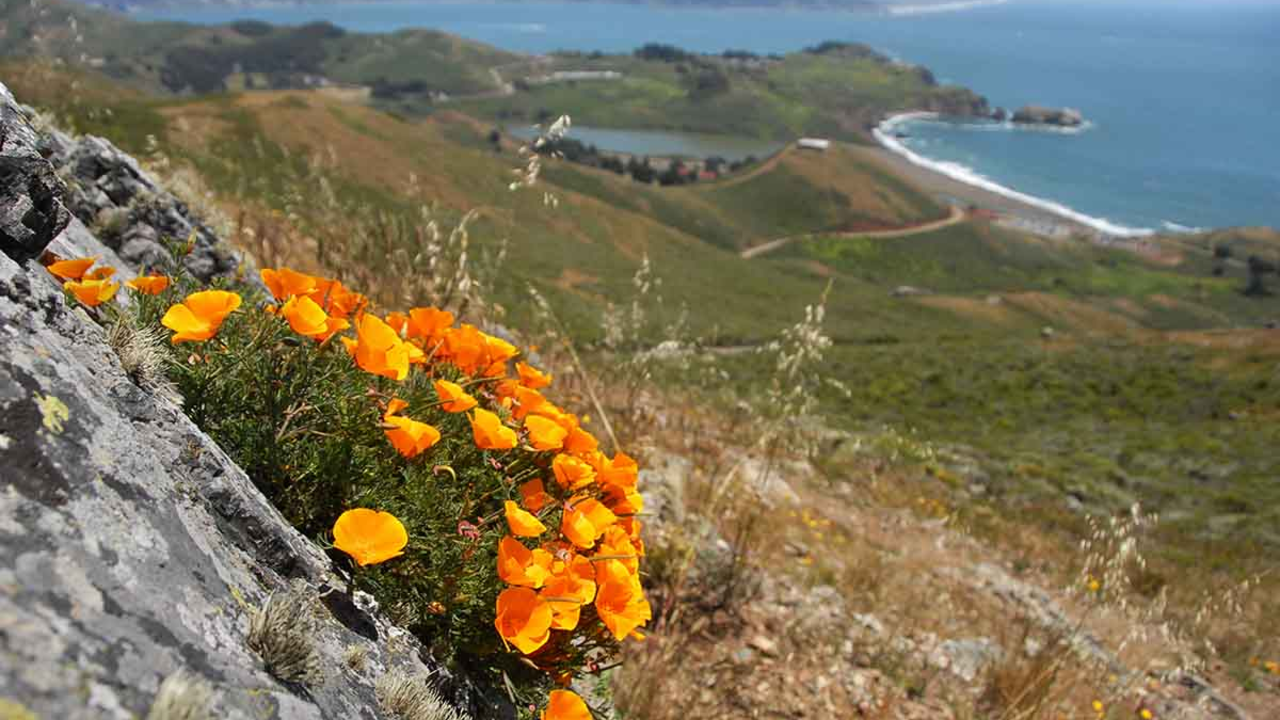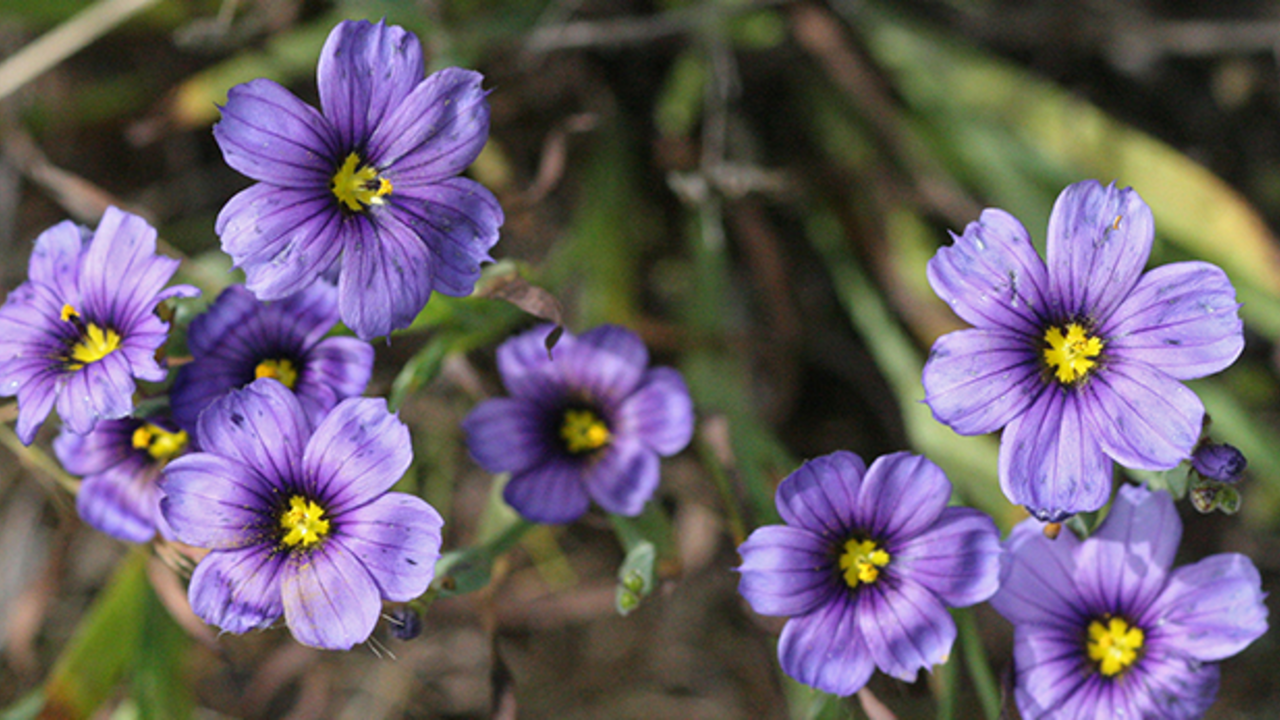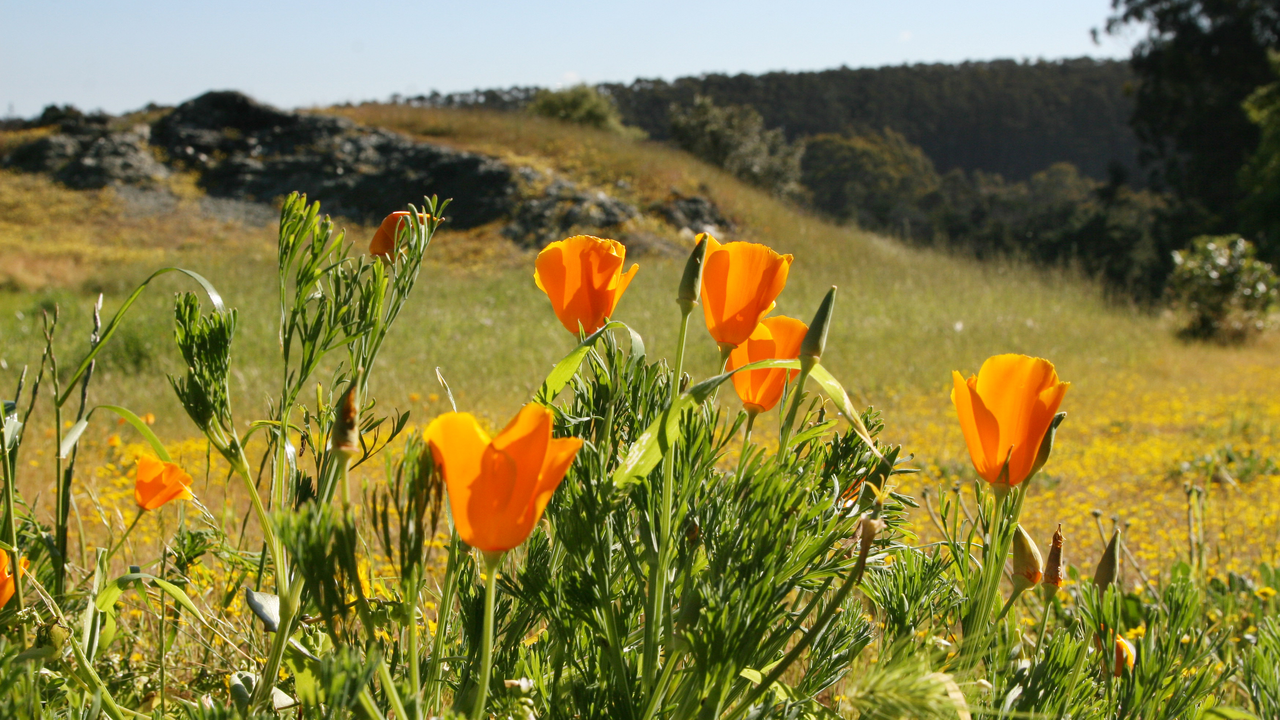Tips for Viewing Wildflowers in the Golden Gate National Parks
Springtime in the parks: A time when the landscapes come alive in a vibrant display as colorful as any crayon box.
These floral fireworks shows have become highly-coveted backgrounds for social media posts. But high visitation paired with careless trampling makes these fragile flowers and their habitats susceptible to damage.
Where can you enjoy the array of seasonal flora while minimizing your impact? Follow these tips:
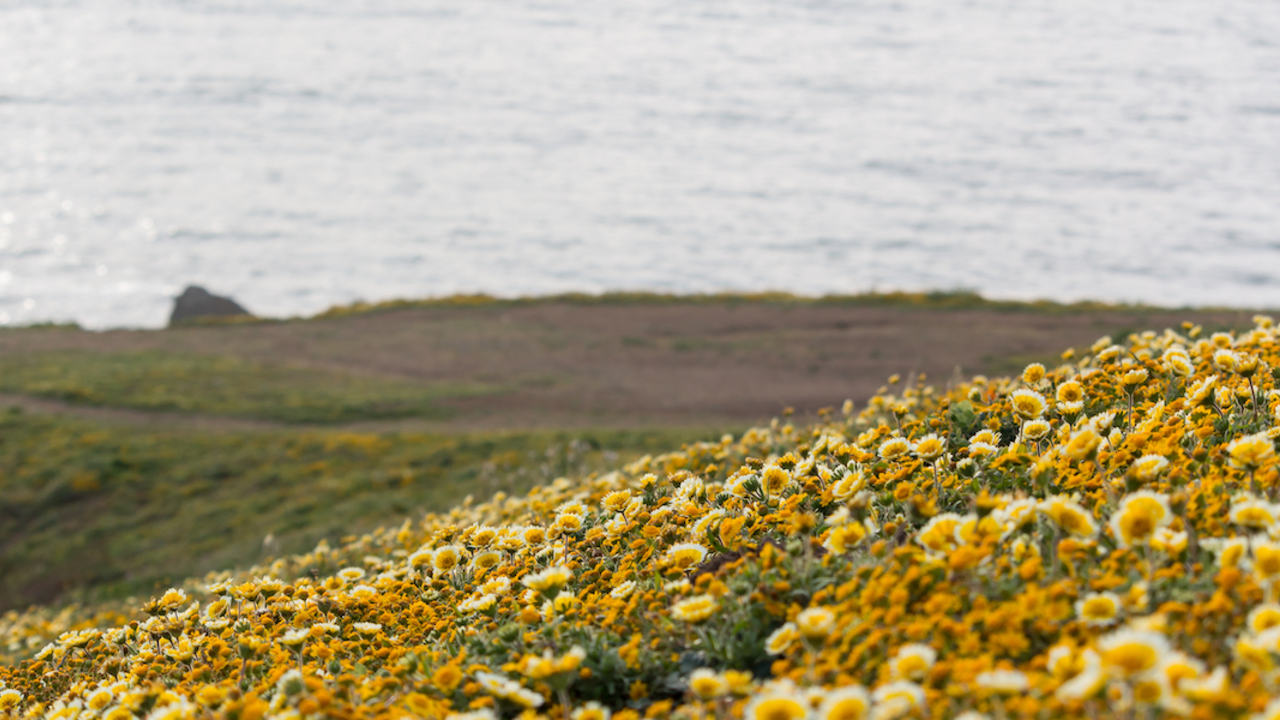
Where and when to find wildflowers in the parks
You can expect to start seeing sprouts stir from their winter slumber from late March to mid-April. The coastal grasslands often carpeted with flowers are Tennessee Valley and the Marin Headlands in Marin County; Fort Funston and Lobos Creek Valley in San Francisco County; and Mori Point and Sweeney Ridge in San Mateo County.
“Mori Point has an impressive spring wildflower bloom,” says Michael Chasse, a biologist for the National Park Service. “[The park features] goldfields, tidy tips, California poppies, coast paintbrush, checkerbloom, blue-eyed grass, seaside daisy, ruby chalice clarkia, and many others.”
Stay on designated trails
We get it: It’s easy to veer off a trail while you’re enjoying the parks. While we don’t want to diminish your explorer spirit, please stay on designated trails. You might think it’s harmless when it’s only you taking that shortcut, but when a lot of people follow suit, incidents of wildflower trampling amplify.
“The National Park Service mission seeks to promote the enjoyment of our resources, like beautiful wildflowers, but at the same time ensure their protection,” Chasse says. “The park visitor who is drawn to the beauty of that flower may not be aware they are interfering with its reproduction.”
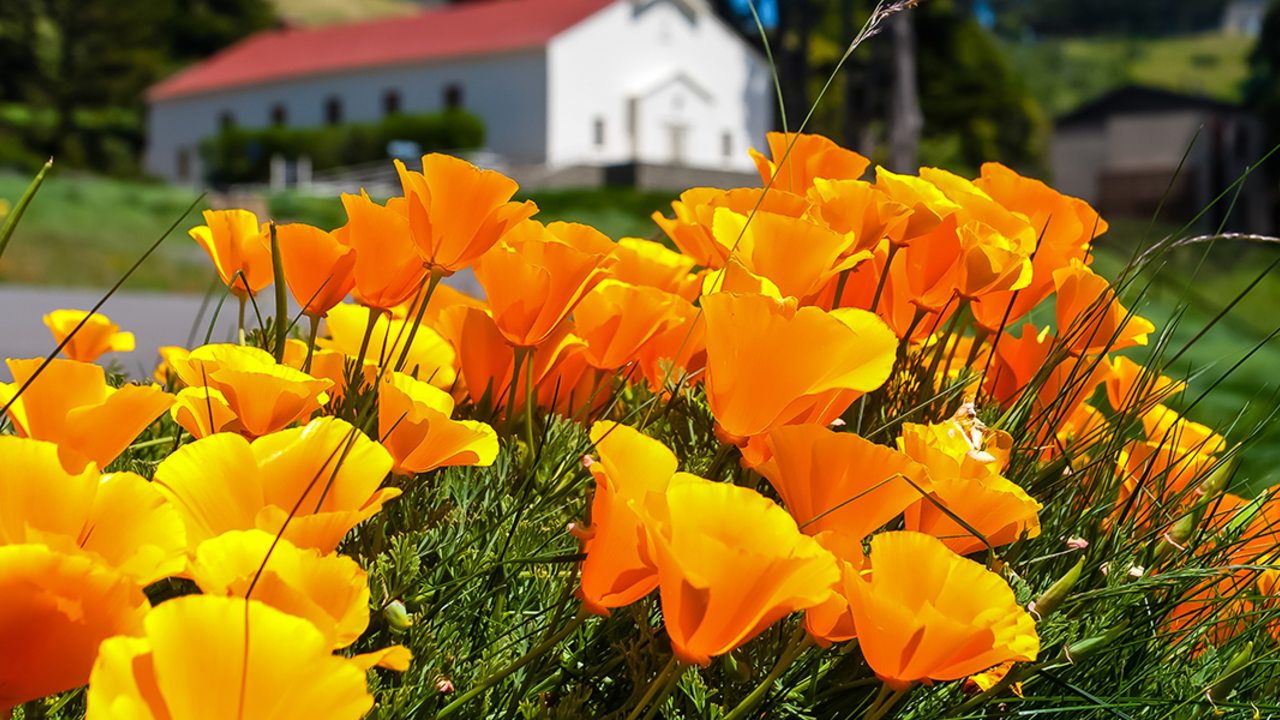
Please do not touch or pick the flowers
Don’t be that person who lies down on a bed of tidy tips or California poppies for that Instagram capture. And whatever you do, please do not pick the flowers, even if you think they’d make a flamboyant bouquet for your sweetheart.
“It is illegal to pick wildflowers from national parks without a scientific research permit,” Chasse says.
Picking those seaside daisies, goldfields, and other wildflowers prevents them from making seeds, which can lead to a decline of wildflower numbers in the future.
“Those seeds represent future generations of wildflowers,” Chasse says. “In some cases, the decline may lead to a complete loss of a wildflower species from a particular area. That's not only a loss for the wildlife dependent upon that plant, it is an extinction of an experience that visitors seek in their parks.”
Not to forget that most animals rely on flowering plants at some point in their life, if not throughout.
“Wildflowers produce pollen and nectar for a multitude of insects such as bees and butterflies,” Chasse says. “Wildflowers, once pollinated, produce seeds that are important food sources for animals of all sizes. Think of the birds that gather nuts and the bears that eat wild berries. And, of course, humans who still gather wild fruits for sustenance.”
Only take photos
Instead of picking flowers, snap a pic with your closest camera and let the wildflowers be. If there’s room to do it, give the bloom plenty of breathing space in case you lose your balance and take a tumble onto the nearest flower bed.
As always, pack it in, pack it out
As with any adventure into our shared open spaces: Dispose of your waste properly, or better yet, take it with you when you leave. If you see some litter that isn’t yours, do us all a courtesy: Toss it in the trash.
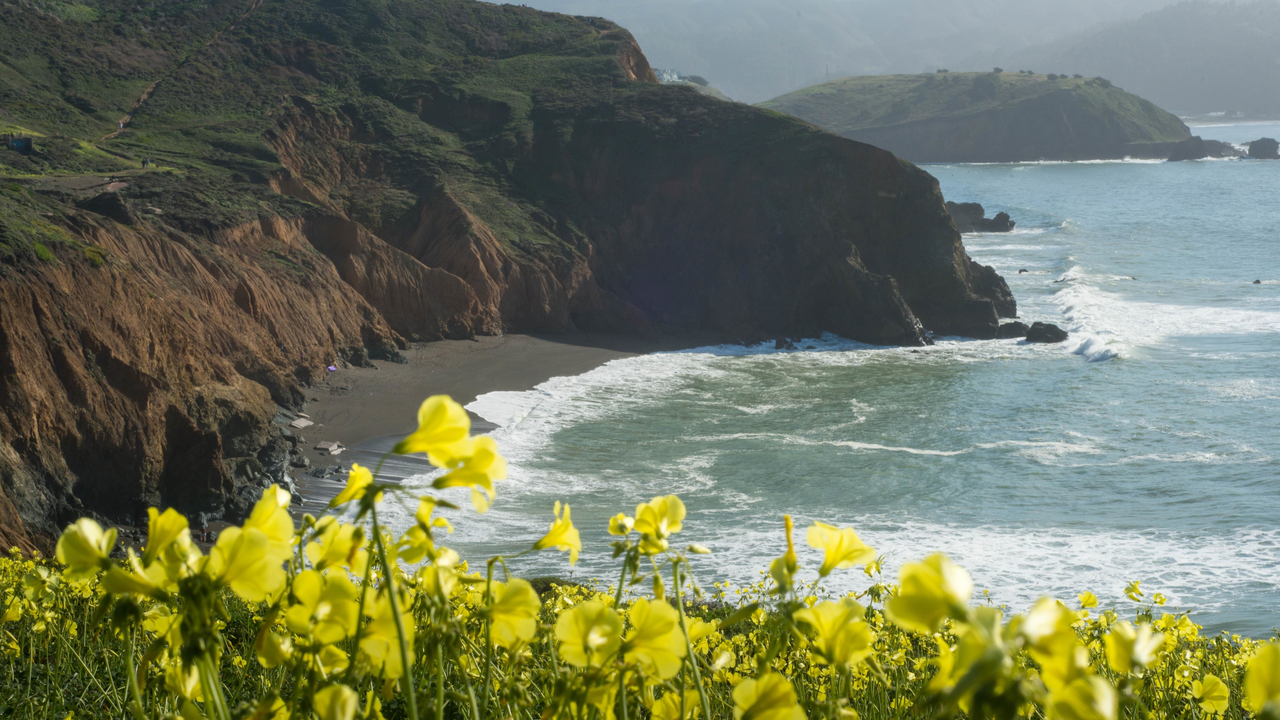
Set an example in your social media posts
#DontDoomtheBloom is a trendy hashtag because of the improper behavior of some flower observers. When you post a pic of the flora, encourage your network to respect the wildflowers in the same ways you did: Stay on trails, don’t touch or pick, and leave no trace.
While you’re at it, tag us in your Instagram post (@ParksConservancy) so we can see the #superbloom through your eyes.

